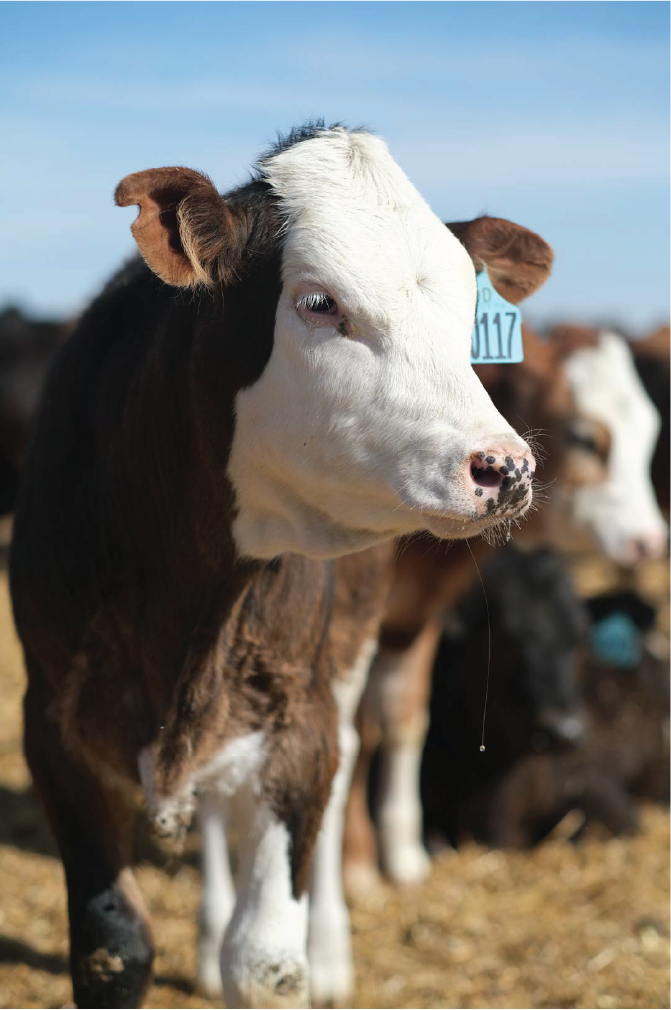The value of a combination antibiotic for treating Bovine Respiratory Disease (BRD)
By Dr. Dave Sjeklocha
The fall cattle run can be particularly challenging for calves; commingling, shipping and a new address all can add stress. To make matters more challenging, wide temperature fluctuations are common. It can be 40 degrees Fahrenheit in the morning and 80 degrees in the afternoon.
The thermal neutral zone is the normal body temperature that does not require an animal to use energy beyond its normal basal metabolic rate. Any time an animal must extend energy to stay in that zone, they are under stress. Making sure there is ample, dry bedding can help. Bovine respiratory disease (BRD) is one of the most common disease challenges. Its impact on days on feed and cost of gain, plus treatment costs can take their toll on productivity and profits.
Good animal husbandry practices with a focus on minimizing or de-stressing cattle, coupled with a comprehensive vaccine program, is the first line of BRD defense.
Vaccinating vs. immunizing cattle
It’s critical to understand that “vaccinating cattle” is not the same thing as “immunizing cattle.” Vaccinating is the act of administering a vaccine; immunizing cattle is the animal responding to the vaccination. For this to happen, two things need to take place. First, the vaccine must be correctly cared for and administered. Second, the animal must be in a physiological state in which it can respond to the vaccination.
When reconstituting the modified live vaccine, use a swirling or rolling motion vs. shaking that can damage the modified live virus within the vaccine. Vaccines should be kept cool and out of sunlight. Modified live vaccines should be used within two hours of opening. Any remaining reconstituted modified live vaccine at the end of the day should be discarded.
It’s important to store the vaccine cake and sterile diluent per the label. The protocols for proper handling of vaccines or medications prior to administration need to be fully explained and reinforced with processing crews, whether an on-site or custom crew.
A herd veterinarian can best advise what vaccines to use and when to vaccinate calves. For calves to be able to respond to vaccines, they should be on feed and drinking.

When you do administer vaccines, stress can be reduced by minimizing the time calves are in the tub, alley and chute. I recommend bringing in just enough cattle at a time to keep the crew at the chute working and not have cattle standing in the tub.
Making the right treatment choice
When a calf does get sick, the goal is to get it back on the road to performance as quickly as possible. Every day a calf is sick, their performance gets worse. Anything we can do to identify a sick calf early, administer the right treatment and give them a good environment is going to help them recover faster and pay dividends.
RESFLOR GOLD® (Florfenicol and Flunixin Meglumine) combines a powerful antibiotic and a fast-acting non-steroidal anti-inflammatory in one dose. The benefit of using a non-steroidal anti-inflammatory is that it helps reduce fever due to BRD. When cattle have a fever, it commonly is accompanied by loss of appetite. Just like in humans, dehydration is a common issue when animals are sick. A calf that is dehydrated can’t work the mucus out of their lungs nearly as efficiently as a calf that is fully hydrated.
We also need to focus on the condition of the hospital pen and be sure it’s not overcrowded. To aid in their recovery, cattle need the fundamentals of good animal husbandry – fresh feed, clean water, dry pens and plenty of bedding. We want to avoid leaving animals in the hospital pen longer than necessary as there is an adjustment when they transition back to the home pen.
We want to get cattle back in the home pen as soon as possible. Some animals, if detected early in the disease process, may be able to be returned to the home pen the same day they are treated. This can require extra labor, but it reduces hospital pen overcrowding and results in healthier animals. Cattle recover faster and less antibiotic is required when we use the right antibiotic, so it’s important to work with your veterinarian and follow their protocols.

Important Safety Information
RESFLOR GOLD: Animals intended for human consumption must not be slaughtered within 38 days treatment. This product is not approved for use in female dairy cattle 20 months of age or older, including dry dairy cows. Use in these cattle may cause drug residues in milk and/or in calves born to these cows. A withdrawal period has not been established in pre-ruminating calves. Do not use in calves to be processed for veal.
Find more content for your beef operation.
About the author

Dr. Dave Sjeklocha, D.V.M.
Technical Services Manager,
Merck Animal Health
